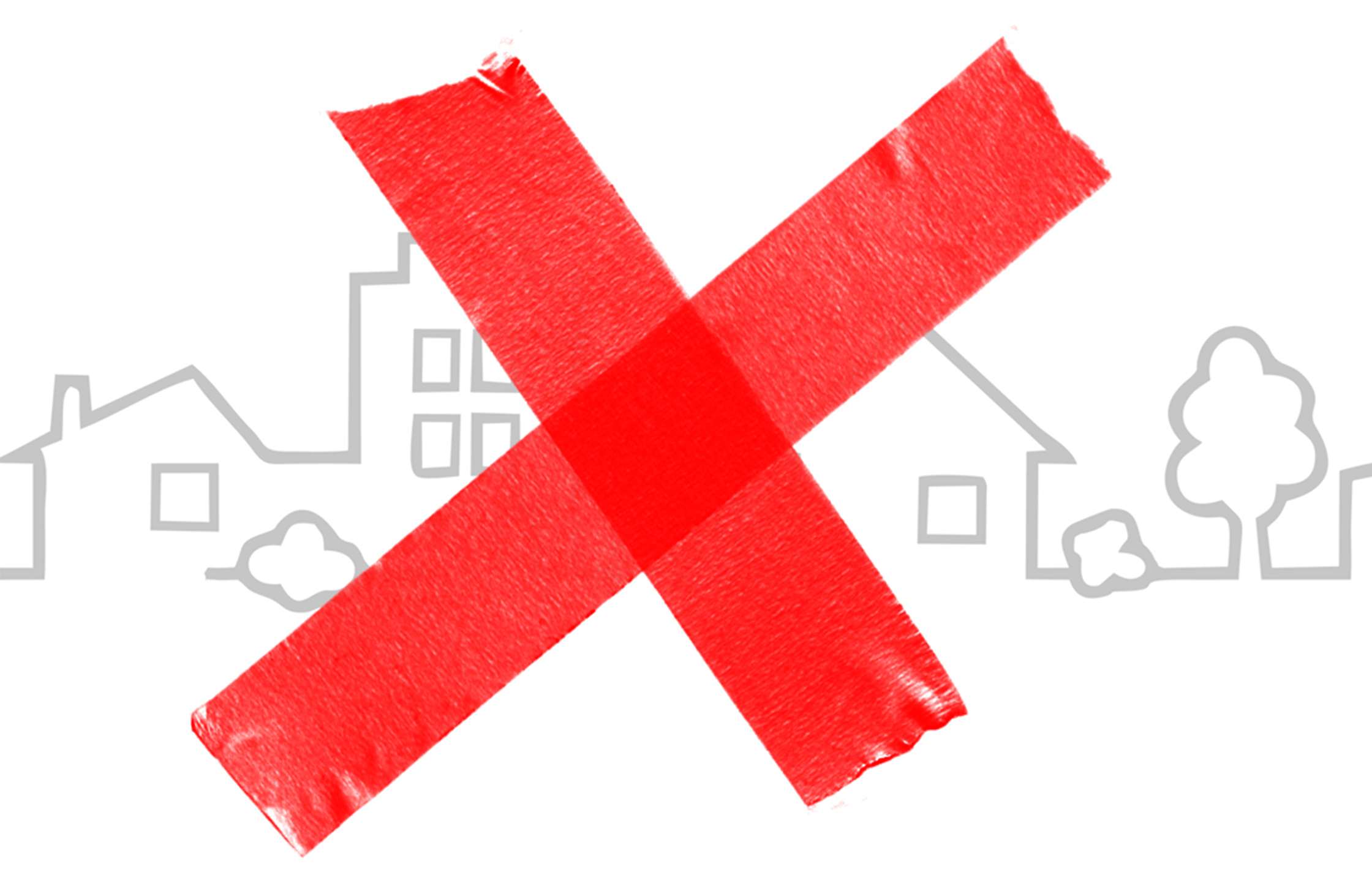There has been a lot of soul searching by Democrats following their loss to a presidential candidate as flawed as Donald Trump. While he’s underwater in national polls, the Democratic Party polls even worse.1 How can that be?
I suggest that excessive regulations are a major factor.
Regulations are intended to make our lives better by protecting us from harm (not just us; plants and animals, as well).
All regulations involve tradeoffs. While certain actions benefit some people, they may be prohibited because they cause harm to others.
Because there are tradeoffs, the decision whether to regulate an action is subjected to a cost-benefit analysis that compares the benefit to some with the harm to others — although in my reckoning, if the harm is existential, the benefit shouldn’t even be considered.
Regulations have proliferated over the last six decades. In the U.S, we have federal regulations that take up 180,000 pages, up from 20,000 in the early 1960s.2
Writing regulations is a huge industry. Legislatures are constantly writing and passing laws calling for regulation, leaving the details to the executive branch.
While regulations protect people and wildlife from harm, they also create obstacles that cost all of us. They restrict the land that can be built on, the supply of materials with which to build homes and goods, and increase the complexity of the products we use. They make it more difficult to start a business, develop a product, and sell that product.
These factors contribute to our current housing crisis, wherein the cost of purchasing housing is out of reach for all but the wealthiest. Workers pay more than than the expected 30% of their income on rent,3 the number of homeless has exploded, and energy and transportation infrastructure are failing to meet the demands of a growing economy. These shortages have driven inflation, which was a major factor in the re-election of Donald Trump as president.
Some regulations, such as land use zoning, cannot be pinned on Democrats alone, but most of them can.4 Many lower income voters blame Democrats for rising costs.5
The Trump Administration is trying to reduce regulations with a sledgehammer and a chainsaw, but cutting budgets and firing employees won’t cut regulations. The Administration’s approach lacks the skill and understanding needed to surgically remove regulations that have had unintended consequences — and their indiscriminate slashing is harming people (and the environment).
This harm is an opening for Democrats. If they can embrace abundance by calling for smart deregulation, Democrats will protect people and the environment from exploitation, and also get things done.
For example, the expansion of electricity production, storage, and distribution systems can be accelerated by replacing the current six-year waiting period for suing over environmental concerns with a six-month window. As it stands now, the system allows objectors to wait until just before the six-year deadline to file; then the lawsuit takes more years on top of that to work its way through the courts. Six-plus years of delay costs utilities a lot of money, resulting in many worthwhile projects being cancelled.
Concerns with merit can still be addressed without allowing environmental laws to be abused by those opposed without standing. Congress came close to passing an energy permit reform last December.6 Democrats can lead on this if they’re willing to accept reforms that are applied to fossil fuel as well as electricity infrastructure. Such reforms benefit carbon-free electricity more than fossil fuel, and reduce the cost of energy.
It's way past time for Democrats to change their position on nuclear energy, which has a far better safety record than power from any fossil fuel, and provides reliable carbon-free electricity.7 The obsession of too many Democrats on wind and solar power, which can only produce a fraction of the electricity required for carbon-neutral energy without expensive storage, will lead to blackouts and excessively high electricity costs. Not a winning strategy. Yes, we need wind and solar, but we need nuclear, too.
Democrats could take this opportunity to lead on forestry, as well. They could advocate for selective harvesting in national forests, increasing the supply of lumber,8 sequestration of carbon, and reducing tree density. That would allow more sunlight and water for each tree, increasing forest health and mitigating wildfires. The Trump administration is expanding logging, but it’s doing this with a chainsaw — literally — when surgical extraction is needed.
On housing, Houston issued ten times as many building permits in 2023 as San Francisco,9 which goes a long way to explain the much higher rate of homelessness in San Francisco. Democrats can increase housing options by giving property owners more freedom — to build on land currently required to meet excessive parking lot minimums, to add accessory dwelling units in yards with sufficient space, to build higher density housing, and to mix homes with businesses, even in the same building (mixed-use development).10
Regulations are just one of several ways to influence decisions. President Biden relied heavily on subsidies to shift choices to carbon-free technology such as electric vehicles, heat pumps, and carbon-free electricity production. That makes them attractive to consumers and utilities, but the high cost of those subsidies made them a big target for the current Congress and Administration.
A third method is pricing, which, like subsidies, gives consumers and utilities freedom to choose. Pricing applies very well to climate policy because 75% of greenhouse gas emissions are from carbon emitted through the combustion of fossil fuel. While carbon pricing alone would be devastating to the poor, returning all the carbon revenue to the people in equal shares yields a net benefit to all, and therefore could have broad support, and would have little impact on the federal budget.
Ezra Klein and Derek Thompson make the point in their book Abundance that doing too much with policy renders it ineffective.11 The Biden Administration tried to fold DEI into climate policy, which resulted in implementation so slow that few people saw the benefits before it was time to vote in the next presidential election.
Some Democrats are getting it. A Yes In My Back Yard 12 housing movement is getting traction, and Kamala Harris proposed a supply-side policy to build three million homes.13 And as a whole, Democrats are coming around on nuclear power, 14 although a Democratic Senator recently blocked a local tax break for nuclear power.15 Marie Gluesenkamp Perez, however, who represents Washington’s third Congressional District, understands the importance of reducing impediments to making things that work.8
Climate scientist Steve Ghan leads the Tri-Cities Chapter of Citizens Climate Lobby.
Sources:
- https://www.newsweek.com/polls-donald-trump-democrats-approval-rating-2067174
- https://www.economist.com/leaders/2025/01/30/milei-modi-trump-an-anti-red-tape-revolution-is-under-way
- https://www.census.gov/newsroom/press-releases/2024/renter-households-cost-burdened-race.html
- https://thehill.com/opinion/5193600-regulation-hurts-democrats/
- https://better-cities.org/community-growth-housing/democrats-housing-problems/
- https://www.tri-cityherald.com/opinion/opn-columns-blogs/article296148529.html
- https://world-nuclear.org/information-library/safety-and-security/safety-of-plants/safety-of-nuclear-power-reactors
- https://www.nytimes.com/2024/11/22/opinion/marie-gluesenkamp-perez-democrats-trump.html
- Abundance, Ezra Klein and Derek Thompson, 2025, Avid Reader Press, p. 106.
- https://www.planning.org/blog/9227408/supporting-active-living-through-mixed-use-developments/
- Abundance, Ezra Klein and Derek Thompson, 2025, Avid Reader Press, p. 113-117.
- https://www.yesinmybackyard.org
- Abundance, Ezra Klein and Derek Thompson, 2025, Avid Reader Press, p. 212.
- https://heatmap.news/politics/democrats-nuclear
- https://www.tri-cityherald.com/news/politics-government/article305597911.html


